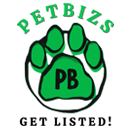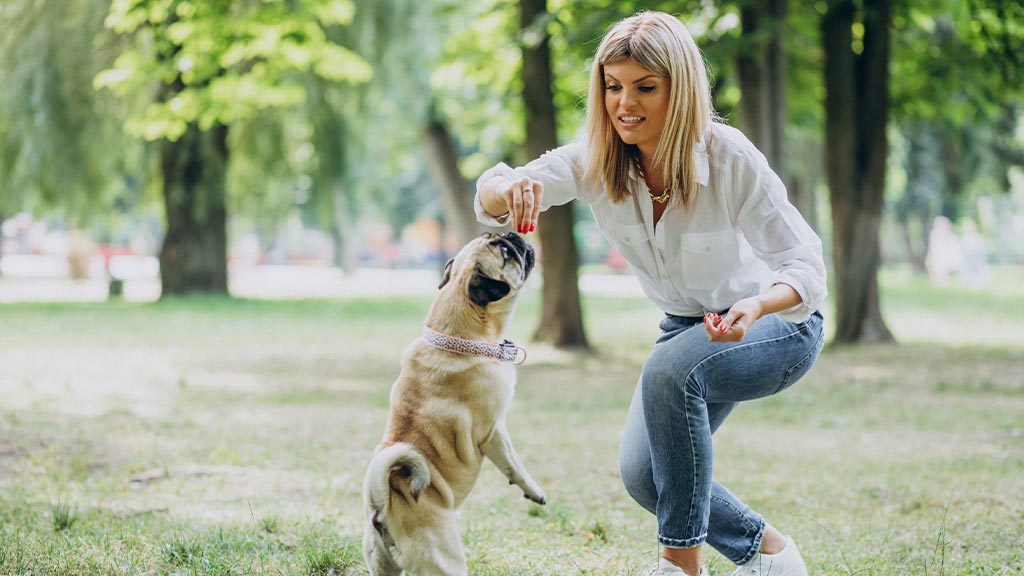If you think training a small dog is easy, think again. While they come in cute and adorable sizes, these dogs often pack a large personality with plenty of unique quirks. All of that can make training feel like a challenging task.
The good news is that with the right strategies and patience, you can turn your small puppy into a well-behaved companion. Before we start, I want to clarify something. It is a myth that smaller dogs need less training. Like large breeds, without proper training, they can develop behavioral issues. Now, let’s take a look at some training challenges and solutions.
Popularity of Small Dogs
If we take a look at the list of most popular dog breeds by the American Kennel Club, nearly half of the top 20 are small dog breeds. Or, to be more precise, eight of the 20 most popular dog breeds are small dog breeds. Even more, the French Bulldog is at the top of the list.
Small dogs have risen in popularity because they require less space and are easier to exercise. They can be moved easily, making them a viable choice for apartment or condo dwellers. At home, a regular-sized room can be converted into a play area without moving even a single piece of furniture.
Are Small Dogs Trainable?
Sadly, some dog owners think that their small dogs require less training. As a result, they give them fewer opportunities to train. Or, they fall into a pattern of picking up small dogs instead of addressing the underlying problem and behavior.
The biggest mistake pet owners can make is treating small dogs like they are not dogs. They deserve the same enrichment and training as large breeds. Dogs of all sizes need training to help them understand the rules and boundaries of our homes and world. Regardless of size, dogs that are trained are more comfortable and secure navigating the world. This makes them easier to live with. Today, we will discuss some training challenges and how you can turn your tiny puppy into a well-behaved dog. Here are some tips for training small dogs.
-
Get on Their Level
Imagine how different the environment looks to a dog who stands less than 10 inches tall. Everything and everyone looks bigger and much farther away. If you want to get a small pup perspective, try putting an alarm clock at the top of a 20-foot ladder. Then, get down on all fours and look up. How far does that clock look to you? Do you feel some neck pain because of your neck being strained? Can you read the numbers, or is it difficult? To summarize, things are not comfortable, right?
The first thing you need to do when training a small dog is to get them closer to you, namely, your hands. You can do that by placing your pup on a table or chair. Some experts prefer the sofa training method. But if you do not like to put dogs on the sofa, then a small table will do. With the sofa, however, you create a special place to cuddle, work, and have fun.
Another great option is to pick up a yoga mat, place a seat on the floor next to your dog, and start training.
Whatever you choose, be sure to do small dog training on a sturdy, wide-raised surface. This will make it easier for your pup to see and respond to your cues.
- Add a Target
If you are training a small dog, your most important tool is a target stick. Your arms can only reach so far. Constantly bending to get on your dog’s level can be painful. So, the solution is to extend your reach by two or more feet.
Target sticks add extension, and you can use them as a lure or focal point for your small puppy. You can purchase ready-made target sticks or make your own at home. At the end of the stick, rub some high-value food like peanut butter, and you are good to go.
-
Do Not Ignore Scent Training
Even little dogs have noses, so do not ignore their need to sniff things. Btw, did you know that 15 minutes of sniffing burns as many calories as one hour of walking? Well, you can use interactive toys like snuffle mats to train impulse control and recall. You can also make tons of sniffing toys from household items. When you practice recall, make the sniffing toy a reward for your dog coming to you. Or you can have him wait patiently while you prepare a sniffing toy. This will teach impulse control and encourage calm behavior.
- Walking on Leash
Leash walking is one of the biggest challenges for people training small dogs. Why? Because while we can feed treats from a pooch to a large dog, small dogs do not reach us. What you can do instead is grab a spatula from your kitchen, and put some peanut butter on the end of it.
When your dog is following you on a loose leash, lower the spoon instead of having to stop, bend down, and give a treat. It keeps the flow and makes training easier.
- Use the Right Tools
Small dogs benefit more from a dog harness than large dogs. Since your small dog will often watch up to you during training and walking, a harness can prevent neck strain. Harnesses give more control and prevent throat injuries caused by pulling. Last but not least, small dogs are at risk of having their leash caught under their legs. With a harness, you eliminate that challenge.
- Be Brave and Consistent With Socialization
As with any other dog, socialization is key to helping small dogs learn about the big world around them. They tend to bark, show reactivity, and be yappy in general. In most cases, this is all because of a lack of socialization.
If you want your small dog to be comfortable with people and other dogs, socialize them as soon as possible. Because they are generally fearful of larger dogs, small puppies benefit more from puppy classes with dogs of their size. Once your dog is comfortable around other small dogs, you can and should socialize them with larger dogs.
Here is the thing. Most owners are afraid that their small dog might react when a big dog sniffs them. But the reality is that large dogs are gentler, calmer, and kinder when they are around small dogs. A well-behaved large dog will adjust and be aware of the size of its friend. Here are some ways to socialize your small-breed puppy:
- Look for small-dog meet-up groups.
- Enroll in puppy classes with a certified instructor.
- Visit playgrounds and parks with children. Bring plenty of treats for the kids to share with your pup.
- Gradually desensitize your dog from fearful and stressful situations.
- Never push your dog if he is not comfortable.
- Call friends from different backgrounds to visit you and your dog.
- Do not bring your small dog into a dog park with dogs of all sizes. Often, larger dogs with high prey drive can cause incidents.
- Organize neutral walks (dogs walking at a close distance to each other without sniffing) with friends who own large dogs.
General Tips for Training a Small Dog
For someone who has lived with a small dog for quite some time, I want to finish the article with some general tips.
- Treat them like a dog, not a human baby.
- Do not tolerate any behavior just because it is cute or you can pick your dog up.
- Find good-quality, low-calorie treats. Small dogs are prone to obesity when given too many treats.
- Pick the things that are most important to you and start from there.
Final Words!
Training a small dog comes with its own set of challenges, but with patience and the right approach, you can shape a well-mannered companion. Understanding their perspective, using the right tools, and prioritizing socialization will make a huge difference in their confidence and behavior.
While their size might tempt you to overlook training, remember that every dog, big or small, benefits from structure and consistency. Whether you’re guiding them on a leash, introducing them to new experiences, or reinforcing positive behaviors, the key is to stay patient and committed.
With the right mindset, your tiny pup can master big lessons and thrive in any environment.
Author
-

Dog owner for 30+ years. Content writer with more than 10+ years of experience writing in various lifestyle niches. Recently created my own website, https://www.thedailytail.com/, trying to use my experience and expertise in spreading the word about dog behavior and dog training.
View all posts

